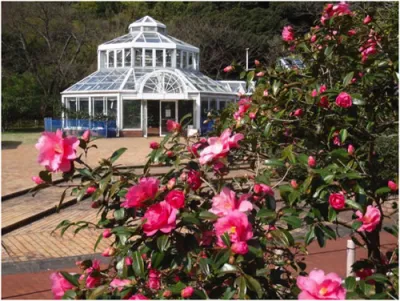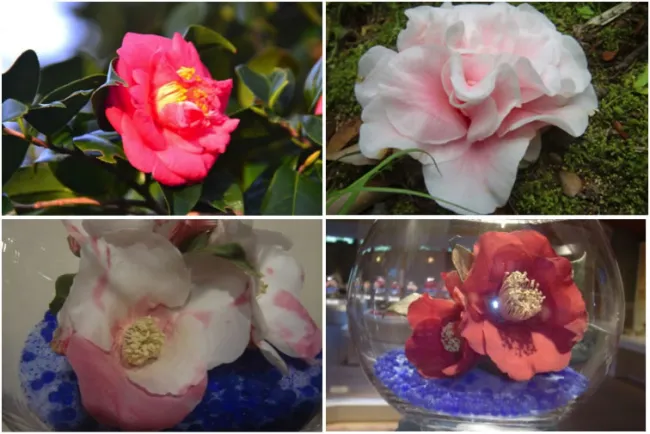Camellia garden of Tokyo Metropolitan Oshima Park

Garden overview
The Metropolitan Oshima Park, established in 1938, is in the northeast part of Oshima island. It includes a zoological park, a camping site, the botanical garden and a seaside nature trail. The total area is about 3.27square kilometers.
The collection, started around 1940, has about 3,200 trees of around 1,000 species and cultivars, and around 5,000 wild Camellia japonica trees. It is among the largest camellia gardens in Japan
Our camellias
The camellia garden is divided into 9 zones.
- Zone of foreign cultivars
Camellia japonica was introduced to Europe from Japan in Edo Period and a lot of cultivars were bread there. Here the Western cultivars are exhibited in this zone. - Zone of the cultivars sorted by color
The cultivars are sorted by the color of the flower such as red, white, yellow, purple, black or pink. - Zone of the cultivars for tea ceremony
This zone includs camellias for tea ceremony. - Zone of wild species of the genus Camellia
This zone includes species found for rather cold climate. - Zone of the cultivars of Camellia sasanqua
- Zone of the cultivars sorted by native region
- Zone of the cultivars sorted by blooming season
- Zone of the cultivars of Camellia reticulata
- Zone of the cultivars of bud variation and leaf variations
Other main facilities in this camellia garden
- Exhibition Greenhouse
This greenhouse is open only during the Camellia festival (from the end of January to the end of March). The fragrant camellias, foreign species and some European cultivars are exhibited. - Camellia Museum
Camellia Pavilion with a Camellia Museum was opened in the garden from 1989. The various information on camellia are provided to the visitors such as cultivation, industrial use, traditional usage in Japanese culture and scientific knowledge.
Among more than 1,000 cultivars, the symbolic cultivars for the park are ‘Akashigata’ and ‘Oniji’. Their large flower at the entrance of the garden welcomes you during the Camellia Festival.

Visitor information
Opening Times
Every day
Entry Fees:
Free
Best Time to Visit
From February to March
Gardens of Excellence certification
Einrichtungen
Web design by Tribal Systems
